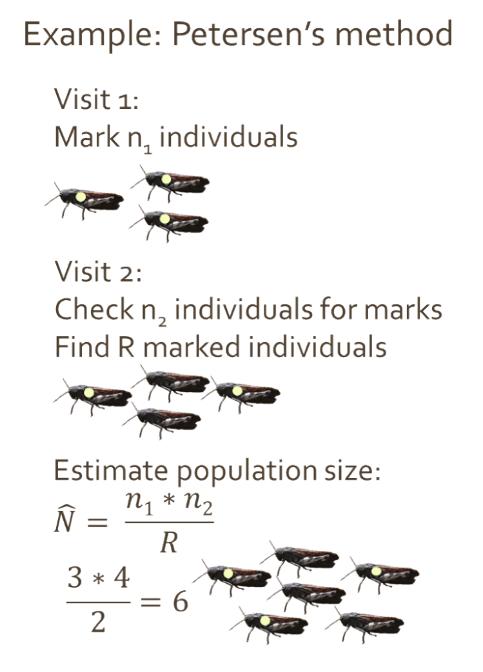Psophus stridulus

Psophus stridulus is a forb-eating grasshopper with a wide range, stretching from Western Europe to Korea. They are sexually dimorphic, with females being larger, usually lighter in colour, and nearly always flightless. Adult males stridulate during flight, showing bright red hindwings. It is not entirely clear what the purpose of this flight is. This behaviour makes it relatively easy to notice stridulating males. Females are more cryptic and difficult to find.
Unfortunately, P. stridulus is endangered in Sweden, and threatened or regionally extinct in many other countries throughout its range. It is a demanding specialist of semi-natural grasslands, a habitat type that has decreased significantly in amount. More specifically, it requires sparse and low vegetation on southern slopes.
Monitoring using mark-recapture

Since it is endangered and also indicates that local habitat quality is appropriate for many other species, P. stridulus populations are being monitored in Sweden. Often, this is done using mark-recapture methods, where individuals are marked when they are first captured, and then checked for marks on subsequent visits.
Mark recapture models also make some assumptions. These vary depending on the model, but in the case of the ones I've used, the most important ones are:
- The probability of capture is the same for marked and unmarked individuals.
- To avoid violating this assumption, you might want the time between visits to be longer, so that marked individuals mix with the rest of the population.
- The population is closed (or open)
- When models assume that the population is closed (no births, deaths or migration), you might want the time between visits to be as short as possible, to avoid violating that assumption.
- Other models assume the population is open, but they generally require more visits.
When recapture rates are low, that is to say when only a small part of the individual checked for marks are marked, population size estimates are very uncertain. This is often the case when P. stridulus is being studied.
My main aims for this study was to find out why recapture rates are so low, check how population size estimate accuracy changes with different recapture rates, as well as to see if the time between visits is important for accuracy.
Habitat preferences
In order to be able to conserve species, we also need to know what they require of their habitat. In the case of P. stridulus, its requirements on the larger scale are well studied. Smaller scale preferences are less well known. A secondary aim of this study was to investigate which parts of a pasture where P. stridulus is known to aggregate are most preferred by the species.
Responsible for this page:
Director of undergraduate studies Biology
Last updated:
06/01/18
